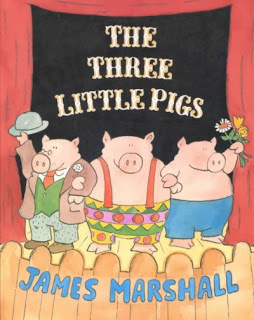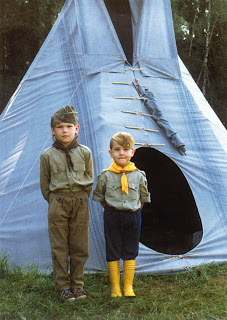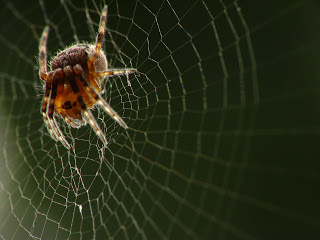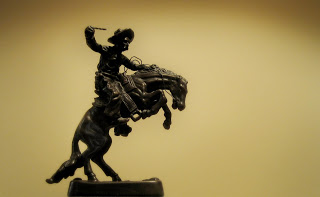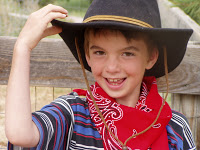My husband and I travel a lot with our kids. They’ve ridden in planes, trains, automobiles, bike trailers, RVs, and a hot air balloon; on bicycles, ferries, kayaks, canoes, sailing boats, power boats, and inner tubes; by air, sea, river, lake, and land. So it came as a bit of a shock when our daughter announced at age 8 that she would no longer fly in an airplane. She would drive across country to visit our family that particular summer, but refused to fly. Houston, we have a problem!
Our daughter had officially joined the approximately one in six Americans who are afraid to fly.
Fear had her in its tight grip and wasn’t letting go anytime soon.
Problem was we were a few months away from flying home to visit our relatives in
Canada.
We were not prepared to drive the over 3,000 miles again in our RV.
Two summers of such travel had worn us, and our somewhat anxious and diarrhea-prone dog, out!
Aerophobia, it turns out, is one of the top fears of most people.
The website
www.fearofstuff.com/phobia-stats indicates that approximately 1 in 23 people suffer from phobias, with nearly 11.5 million sufferers in the
U.S. alone.
A quick Amazon.com search yields some 4,000+ titles devoted to the topic of overcoming fear of flying.
What I’ve learned about children who fear flying is that they can learn that fear through the anxiety of a parent. Aerophobia can also be triggered by watching some disturbing news or movies, reading a book featuring air tragedies, experiencing turbulence on a flight, or due to the death of a family member or friend (either in a plane crash or not), or by overhearing people talking about plane crashes or other anxiety-provoking stories. We could all be more mindful that our kids are ALWAYS listening, whether they seem to be or not. They hear and absorb the news we listen to on the way to school and work, or the TV news we leave on while we cook, or the conversations we have with friends on the phone. Though it is always useful to discuss with children the origin of their fear; it can be often be difficult for them to recall or pinpoint the exact triggering event.
My daughter’s fear of flying might not have been such a big deal except for the fact that we live across country from all our family!
The particular summer after she became a card-carrying aerophobic, we weren’t prepared to drive across country to accommodate her fear.
Given my training as a child/family and mental health therapist I also know full well that avoiding what we fear has a nasty way of not only perpetuating fear but also contributes to what is commonly termed (by mental health professionals anyway) “generalized anxiety.”
I wrote more about this topic in my last post,
Making Friends with Fear.
Here’s my interview with my daughter about her fear of flying. I thought it would be helpful to get a kid’s perspective on how to combat fear–because in my experience, kids have a lot of clarity about life, and are most definitely some of the most inspirational people I know:
Me: When did you first become afraid of flying?
My daughter: “
When I first heard the story of 9/11. I was about 8 and we had just moved to New York. A friend’s mom told me about it and I thought I would never want to be on a flight like that. I couldn’t understand how someone could do something so terrible as fly a plane into a building.” (My personal preference here is to always have these kinds of difficult discussions between a parent and child—but we may not always be our child’s loving bearer of bad news. Debriefing news they may hear at school or on playdates or from older friends is important. Share your perspective on tragic events like September 11th, your values and life-affirming beliefs, with the goal of reassuring your child of his/her safety).
Me: What about the next flight you flew after becoming afraid? Can you remember the next flight was with me and your older brother going to visit family in
Vancouver?
My daughter: “I was just after my 9th birthday. I had to work up the courage to fly. I just thought about how beautiful it would be when we got to our destination. I just kept thinking of all the people I would get to see again. We even flew a couple of those littler commuter planes for shorter times, which were kind of cool.”
Me: Do you remember that you wanted me to hold your hand and to give you some
Rescue Remedy® gummies?
Do you think that helped?
My daughter: “I don’t know. Not really. The Rescue Remedy® gummies were tasty and helped with chewing so my ears didn’t pop. It helped more to think of positive things that I was looking forward to.”
Me: Most recently, you flew with the most confidence I’ve seen in the past few years during our last winter vacation. What do you think shifted?
My daughter: “I just thought that my fear was just in my mind.”
Me: How did knowing that your fear was just in your mind help?
My daughter: “Because then I knew it wasn’t real. Which meant I could get over it in my mind. It was up to me to fix it.”
Me: You still wanted to hold my hand on the way to our destination, but do you remember saying to me on the way back “I don’t want to hold your hand this time ‘cause I’m going to fly with my big bro next summer on our own and I need pretend now that I’m okay, so I’ll be okay when it comes time to fly on my own”?
My daughter: “Nope.” (Typical!)
Me: What made you decide to get over your fear?
My daughter: “
I wanted to be able to go on all sorts of family vacations. I’d also like to someday fly without you guys, just with my big brother to visit family in Canada on our own.”
Me: If you were to offer some advice to another kid who was feeling afraid of flying, what would you tell them?
My daughter: 
“
Just think about what it will be like when you get to your destination. Just focus on all the beauty around you, as you look around you on the plane. Like the clouds and ocean you can see below you.
I took a lot of really cool photos on our last trip.”
Me: What do parents need to know about helping a child with a fear of flying?
My daughter: “You can help them, but ultimately it is in their minds so there isn’t a lot you can do. You just need to listen to them. It helps to talk about it. But not too much. Just enough to let them know it is okay to be afraid sometimes. Let them figure it out on their own, because if you try to fix it—which you can’t anyway—it won’t help them solve the problem on their own for the long-term.”
Me: Do you feel afraid anymore of flying?
My daughter: “Nope.” (She’s 11 now. It took some practice, with a few flights between ages 8 and 11 and visualizing herself someday being able to fly confidently, but I’m happy to report that she is a confident flyer today!)
For some tips on helping your child overcome his/her fear of flying read my follow-up post, “Scared of Flying No More!”
 (This is a BIG problem in the U.S.–who would have known? We’ll assume you are outside in this scenario. Don’t stand under a tree. Do not take shelter under any structure that is made of metal, like a tower or flagpole. Keep clear of water. Don’t lie flat on the ground. Kneel on all fours, with your head low–kinda’ like you would when praying for your life. If, on the other hand, you are inside: avoid all plumbing and electrical appliances.
(This is a BIG problem in the U.S.–who would have known? We’ll assume you are outside in this scenario. Don’t stand under a tree. Do not take shelter under any structure that is made of metal, like a tower or flagpole. Keep clear of water. Don’t lie flat on the ground. Kneel on all fours, with your head low–kinda’ like you would when praying for your life. If, on the other hand, you are inside: avoid all plumbing and electrical appliances. 











